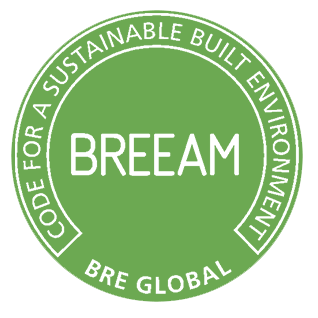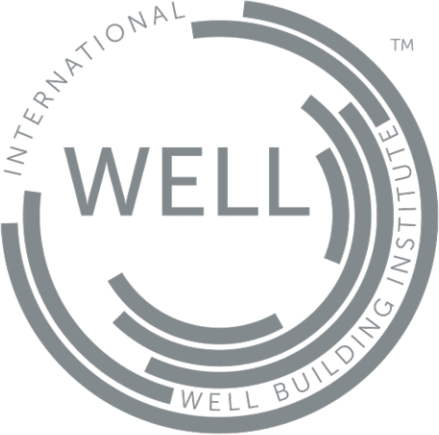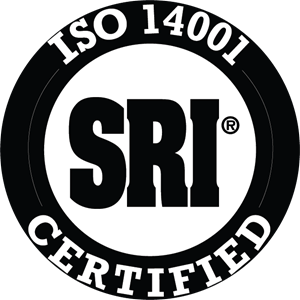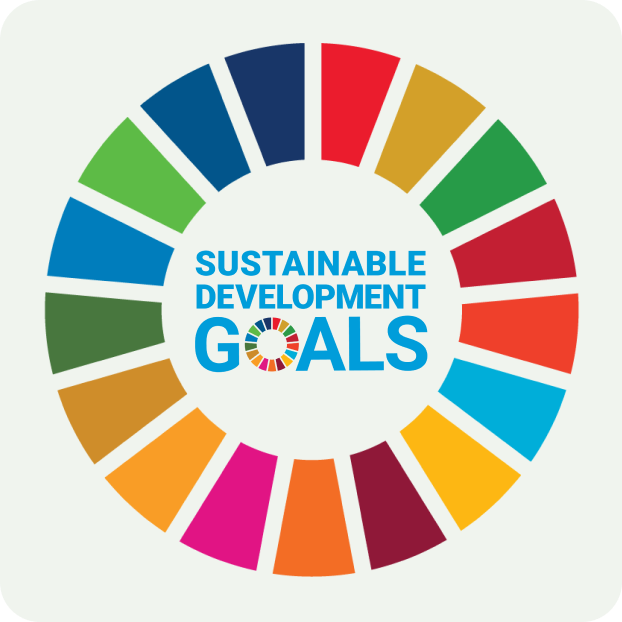
One Terra is green also on the web
Click and reduce energy consumption by 10% while exploring the site. Join the renewal!

Click and reduce energy consumption by 10% while exploring the site. Join the renewal!
As sustainability experts, we are committed to providing personalized solutions that not only meet green certification requirements but also contribute to the advancement of the UN's Sustainable Development Goals (SDGs).
We will work together to identify areas for improvement and implement effective strategies to reduce environmental impact, promote social well-being, and ensure responsible corporate governance.
From carbon emission management to promoting social inclusion, we will develop a comprehensive action plan that reflects your values and business goals.
WITH ONETERRA, WE CAN MAKE A DIFFERENCE TOGETHER.
Contact us today to start your journey towards a greener, more sustainable future.
Our certifications

LEED (Leadership in Energy and Environmental Design) certification, provided by the US Green Building Council (USGBC), is designed to evaluate and recognize buildings that maintain high standards of sustainability, energy efficiency, and ecological maintenance practices over time.
The LEED certification for operational management and maintenance includes several categories:
1. Energy Management: Focuses on optimizing building energy performance by measuring and monitoring energy consumption, implementing strategies to reduce energy use, and utilizing renewable energy sources.
2. Water Management: Promotes efficient water use through low-consumption devices, rainwater harvesting, and other sustainable practices.
3. Materials and Resources: Assesses the responsible use of construction materials and resources during building maintenance, including waste management and sustainable sourcing.
4. Indoor Environmental Quality: Focuses on maintaining a healthy and comfortable indoor environment through air quality control, optimizing natural light, and using health-friendly materials.
5. Innovation: Encourages the implementation of innovative practices and advanced technological solutions to further enhance building sustainability.
Achieving LEED certification requires long-term commitment to sustainable management and energy efficiency, providing environmental benefits as well as economic advantages such as operational cost savings and increased market value.

BREEAM In-Use certification, developed by the UK's Building Research Establishment (BRE), evaluates the environmental, social, and economic performance of existing buildings and their operations.
It assesses three main performance categories:
1. Environmental Performance: Evaluates aspects such as energy efficiency, water use, pollution, sustainable transportation, waste production, and material management.
2. Social Performance: Focuses on the social impact of the building, including indoor quality, accessibility, safety, and community engagement.
3. Economic Performance: Assesses the building’s operational efficiency, cost management, value creation, and investment returns.
BREEAM In-Use offers three levels of certification:
1. Pass: The building meets minimum sustainability standards.
2. Good: Demonstrates above-average sustainability practices.
3. Excellent: Achieves exceptional environmental, social, and economic sustainability.

The WELL certification, developed by the WELL Building Institute (IWBI), focuses on the health and well-being of building occupants. It evaluates several human-centered aspects, including:
1. Air: Ensures high indoor air quality through effective ventilation and the use of low-emission materials.
2. Water: Promotes access to safe drinking water and encourages hydration practices.
3. Nutrition: Encourages healthy food choices by designing spaces that facilitate better dietary decisions.
4. Lighting: Prioritizes natural and artificial lighting to create healthful and well-lit environments.
5. Movement: Promotes physical activity by designing spaces that encourage movement.
6. Thermal Comfort: Ensures a comfortable thermal environment for occupants.
7. Sound: Focuses on noise reduction and creating acoustic environments conducive to concentration and relaxation.
Achieving WELL certification demonstrates an organization’s commitment to enhancing the physical and mental well-being of its building occupants.

The Smart Readiness Indicator (SRI), introduced by the European Union, assesses how well buildings are equipped to support digital and smart technologies, enhancing energy efficiency, sustainability, and occupant comfort. It evaluates aspects such as network connectivity, building automation, IoT devices, sensors, and energy management systems. The SRI also offers recommendations to improve a building’s "smart readiness."
Sustainable Development Goals
In September 2015, more than 150 international leaders gathered at the United Nations to contribute to global development, promote human well-being, and protect the environment. The community of nations approved the 2030 Agenda for Sustainable Development, which includes 17 Sustainable Development Goals (SDGs) and 169 targets aimed at eradicating poverty, fighting inequality, and fostering social and economic development.

The SDGs are universally applicable, meaning that all countries must contribute to achieving the goals according to their capabilities.

END POVERTY
Despite significant progress in the fight against poverty since 1990, more than 800 million people, 70% of whom are women, still live in extreme poverty. The new Agenda for Sustainable Development aims to eliminate extreme poverty by 2030. Beyond the goal of eradicating extreme poverty, Goal 1 represents a comprehensive approach to poverty as a whole, but also targets specific national realities of poverty. The poor are particularly vulnerable to economic and political crises, biodiversity and ecosystem issues, natural disasters, and violence. To ensure that those who have escaped poverty do not fall back into it, this goal also includes measures to strengthen livelihood resilience and social security systems.

ZERO HUNGER
The situation has improved in many countries, but many people around the world still suffer from hunger and malnutrition. Malnutrition affects nearly 800 million people, most of whom are women and children. The goal of the 2030 Agenda is to end hunger and all forms of malnutrition within the next 15 years. Considering the rapid growth of global food demand, it is estimated that world food production will need to double by 2050. About 70% of malnourished people directly or indirectly rely on agriculture for their livelihood, making small farmers particularly vulnerable to malnutrition. The quality of food is as important as the quantity of food. Goal 2 also includes economic aspects, such as doubling agricultural productivity and the income of small-scale farmers by 2030. Additionally, it includes provisions for sustainable agriculture to prevent an increase in food production that could harm the environment.

GOOD HEALTH AND WELL-BEING
The Millennium Development Goals (MDGs) have significantly contributed to improving global health, for instance, in the fight against diseases such as AIDS, tuberculosis, and malaria. The number of deaths from malaria has decreased by 60% since 2000. However, the results have failed to meet expectations in many areas, such as reducing child and maternal mortality. The experience with the MDGs has shown that health issues must be analyzed in context, not in isolation. Education and food security influence the effectiveness of healthcare programs. Goal 3 continues along the same lines as the MDGs, for example, regarding child and maternal mortality, as well as communicable diseases like AIDS, malaria, and tuberculosis. It also includes provisions to combat non-communicable diseases, such as diabetes, and to prevent road accidents and drug abuse. All people should have access to quality healthcare services and medicines. Another goal for 2030 is to ensure universal access to sexual and reproductive health, including family planning, information, and education.

QUALITY EDUCATION
The international community has reiterated the importance of quality education and training for improving the living conditions of people, communities, and entire societies. Building on the Millennium Development Goals (MDGs), the new Sustainable Development Goal 4 goes beyond primary education for children, particularly emphasizing the link between basic education and vocational training. It also highlights the equity and quality of education in a lifelong learning approach. Goal 4 aims to ensure that all children, adolescents, and adults—especially the most marginalized and vulnerable—have access to education and training appropriate to their needs and context. This makes education a factor contributing to making the world safer, more sustainable, and interdependent.

GENDER EQUALITY
Gender inequality is one of the greatest obstacles to sustainable development, economic growth, and poverty reduction. Thanks to SDG 3 on gender equality and the empowerment of women, the opportunities for girls to enroll in school and the integration of women into the labor market have increased significantly. SDG 3 has brought significant visibility to the issue of gender equality, but important issues remain, such as violence against women, economic disparities, and low female participation in political decision-making. Goal 5 supports equal opportunities for men and women in economic life, the elimination of all forms of violence, early and forced marriages, and parity in participation at all levels.

CLEAN WATER AND SANITATION
Access to safe drinking water and sanitation is a human right and, along with water resources, a crucial factor in all aspects of social, economic, and environmental development. The MDGs of 2000 included targets on water and sanitation but did not address other essential aspects of sustainable development, such as water resource management, wastewater management, and water quality to prevent disasters. In addition to access to drinking water and sanitation, Goal 6 includes the protection and restoration of water-related ecosystems (including mountains, forests, wetlands, rivers, and lakes), aims to improve water quality and reduce pollution, particularly from hazardous chemicals. It also supports transboundary cooperation as key to integrated water resource management at all levels.

AFFORDABLE AND CLEAN ENERGY
Access to energy is an essential prerequisite for achieving many sustainable development goals that extend beyond the energy sector, such as eliminating poverty, increasing food production, providing clean water, improving public health, education, creating economic opportunities, and empowering women. Currently, 1.6 billion people worldwide lack access to electricity. Goal 7 supports universal and reliable access to modern energy services at affordable prices. As sustainable development depends on economic development and climate, Goal 7 aims for a significant increase in the share of renewable energy in the global energy mix and a doubling of the global rate of improvement in energy efficiency. It also promotes the research of renewable energy and investment in clean energy infrastructure and technologies.

DECENT WORK AND ECONOMIC GROWTH
Global unemployment reached nearly 202 million in 2012, with about 75 million of these being young women and men. Approximately half of the global population still lives on the equivalent of around two dollars a day, and in many places, having a job does not guarantee escaping poverty. Globally, 470 million jobs are needed for those entering the labor market between 2016 and 2030. This slow and unequal progress requires rethinking and reorganizing economic and social policies aimed at poverty elimination; creating quality jobs remains one of the major challenges for nearly all economies. Sustainable economic growth requires conditions that allow people to have quality jobs, stimulate economies, and at the same time, do not harm the environment. Additionally, there is a need for job opportunities and decent working conditions for the entire working-age population.

INDUSTRY, INNOVATION, AND INFRASTRUCTURE
Investments in sustainable infrastructure and scientific and technological research drive economic growth, create jobs, and promote prosperity. Costly infrastructure projects are planned for the next 15 years, particularly in developing countries and emerging economies.
Goal 9 aims to build resilient infrastructure, promote industrialization, and foster innovation. The goal is to achieve greater resource efficiency, increased adoption of clean and environmentally friendly technologies, and industrial processes needed to make infrastructure and industries sustainable by 2030. It will provide small industries with broader access to affordable financial and credit services and increase their integration into markets. Additionally, it will support internet access in the world's least developed countries.

REDUCED INEQUALITIES
Global inequalities are significant and are one of the major obstacles to sustainable development and the fight against poverty; within many countries, they have been increasing in recent years. Inequalities limit the opportunity to make a meaningful contribution to social, cultural, political, and economic life. Therefore, Goal 10 focuses on reducing inequalities within and among countries. Specifically, it aims to increase the income of the poorest classes to achieve empowerment and social, economic, and political inclusion for all by 2030; ensure equal opportunities by eliminating discriminatory laws, policies, and practices; facilitate more regular and secure human migration through appropriate migration policies; and increase the representation of developing countries in decision-making processes within international economic and financial institutions.

SUSTAINABLE CITIES AND COMMUNITIES
Global urbanization is one of the most significant developments of the 21st century. More than half of the global population lives in cities, a percentage expected to rise to 70% by 2050. Cities drive local and national economies, serving as centers of prosperity where over 80% of global economic activity is concentrated. Urbanization also presents significant challenges, as cities have a huge environmental impact; they occupy only 3% of the world's surface but account for three-quarters of global resource consumption and 75% of global emissions. Goal 11 aims to reduce the negative environmental impacts of cities, particularly in terms of air quality and waste management. It requires more inclusive and sustainable forms of urbanization, based on a participatory, integrated, and sustainable approach to urban planning. Additionally, it aspires to ensure universal access to safe and inclusive green and public spaces, especially for women and children, the elderly, and people with disabilities, and to provide access to safe and affordable transportation systems.

RESPONSIBLE CONSUMPTION AND PRODUCTION
The global population currently consumes more resources than ecosystems can provide. For social and economic development to fall within the carrying capacity of ecosystems, fundamental changes are needed in how societies produce and consume. Goal 12, implementing the 10-Year Framework of Programmes on Sustainable Consumption and Production Patterns (http://www.unep.org/10yfp/), aims at the environmentally sound management of chemicals and all wastes, as well as substantial reduction of waste generation through measures such as recycling. Goal 12 also aims to halve food waste, encourage businesses to adopt sustainable practices, and promote sustainable public procurement policies.

CLIMATE ACTION
Climate change is a key challenge for sustainable development. Global warming is causing changes in the global climate system that threaten the survival of large segments of the population in less developed countries, while infrastructure and some economic sectors are vulnerable to the risks of climate change, particularly in developed regions. Additionally, changes in precipitation and temperature patterns are affecting forests, agricultural lands, mountain regions, and oceans, as well as the plants, animals, and people that inhabit them. Global carbon dioxide (CO2) levels increased by over 50% between 1990 and 2012.

LIFE BELOW WATER
Oceans, their temperature, chemical composition, currents, and life make Earth a habitable place for humanity, and historically, seas have been vital channels for trade and transport. Oceans cover three-quarters of the Earth's surface, contain 97% of the Earth's water, and represent 99% of the planet's volume occupied by living organisms. Rainwater, the water we drink, weather, climate, our coastlines, much of our food, and the oxygen in the air we breathe are elements provided and regulated by the sea. Proper management of this fundamental global resource is essential for a sustainable future, and among other things, Goal 14 aims to significantly reduce all forms of marine pollution by 2025, regulate fishing, and strengthen the resilience of marine and coastal ecosystems.

LIFE ON LAND
Conservation and sustainable use of biodiversity are vital for social and economic development as well as for human survival. However, there is a clear and ongoing decline in biodiversity, with forest area loss threatening human prosperity and impoverishing poor rural populations—especially indigenous and local communities. Biodiversity and forests contribute to poverty reduction and are essential for food security and human health, as they provide clean air and water, absorb CO2 emissions, and support environmental development. Goal 15 aims to conserve, restore, and sustainably use terrestrial ecosystems, halt deforestation, ensure the restoration of degraded forests, and substantially increase afforestation by 2020. It also includes participating in the fight against desertification by 2030 and restoring lands affected by desertification, drought, and floods. To protect biodiversity, Goal 15 requires urgent measures to end poaching and trafficking of protected animal and plant species.

PEACE, JUSTICE, AND STRONG INSTITUTIONS
It is clear that without a peaceful and inclusive community and effective governance, development cannot be sustainable. For example, countries affected by conflicts are furthest from achieving the SDGs, while in many other countries, the establishment of peace institutions has significantly contributed to their realization. Goal 16 aims to promote peaceful and inclusive societies by 2030. It seeks to reduce all forms of violence, including torture, and combat all forms of organized crime, as well as significantly reduce corruption and bribery, as well as illicit financial flows and arms trafficking. Goal 16 also aims to promote inclusive institutions and the rule of law and ensure equal access to justice.